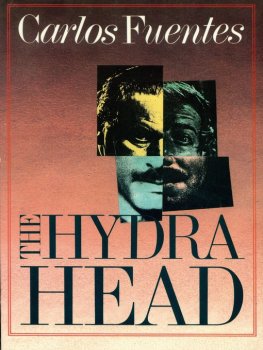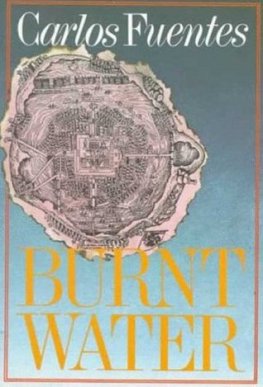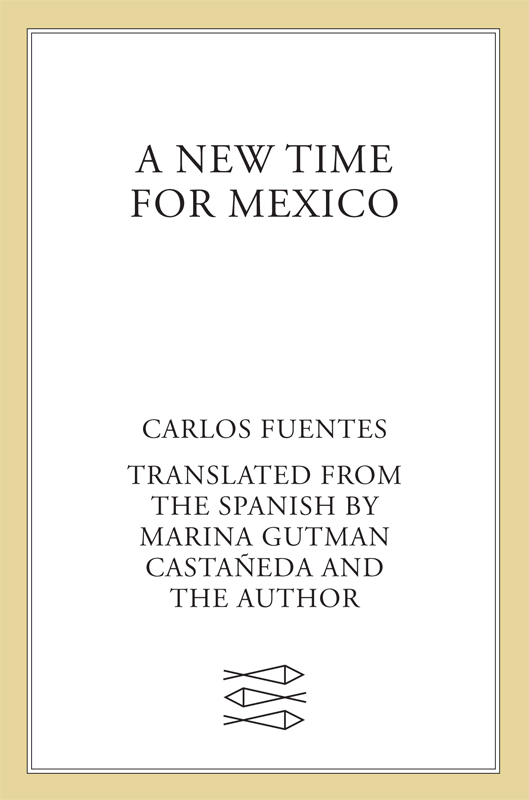
The author and publisher have provided this e-book to you for your personal use only. You may not make this e-book publicly available in any way. Copyright infringement is against the law. If you believe the copy of this e-book you are reading infringes on the authors copyright, please notify the publisher at: us.macmillanusa.com/piracy.
Contents
1:
2:
3:
4:
5:
6:
7:
8:
9:
10:
11:
12:
solamente lo fugitivo permanece y dura.
only the fleeting lasts and endures.
A Roma sepultada en sus ruinas
Francisco de Quevedo (15801645)
1 : MEXICO
The Face of Creation
To see Mexico from the air is to look upon the face of creation. Our everyday, earthbound vision takes flight and is transformed into a vision of the elements. Mexico is a creation of water and fire, of wind and earthquake, of the moon and the sun.
Not just one sun but the five suns of ancient Mexican cosmogony. First comes the Sun of Water, which presides over the creation of the world and ends in the storms and floods that foretell the coming erasSun of Earth, Sun of Wind, and Sun of Fireeach ending in catastrophe until we arrive at the fifth sun, our own, which awaits the final cataclysm.
Sun of Water
Coursing through Mexico are serpentine rivers, mere threads of fertility in the midst of deserts, opulent tropical undulations pouring slow and wide into the sea. Over the flowing waters of the Papaloapn, river of butterflies, over the still waters of Lake Ptzcuaro, furrowed by dragonflies, flutters the goddess Itzpapalotl, a star in the Aztec pantheon. Her very name, Obsidian Butterfly, resounds with the ambiguity of all the elements, her fragile multicolored wing at once a fearful sacrificial knife.
She is the first sign of creation, proclaimed by the fleeting liquid element. It is not the nature of water to be always placid, and when it lies as calm as a mirror locked in the crater of a volcano, its image is ominous indeed, for its supernatural tranquillity promises an imminent commotion. What are our years when seen against the mountains millennia of stone? Who can really believe that these rock-encircled lakes in the craters of Toluca and Puebla always wore, and always will, this same metallic, motionless sheen?
Now everything moves again. The Usumacinta River flows on, inseparable from the forest it waters, equally inseparable from the clouds that gather over both jungle and river, as if they, too, were drawn along by the current. We know that all threesky, river, and junglehide and protect the civilizations that slumber beneath them, pretending to be dead, giving signs of life only in the mystery of the figures drawn on the rocks beside the Planchn River and in the ghostly processions of the frescoes at Bonampak.
The stillness of the waters is illusory. Majestic waterfalls cascade, washing away the land and its history. Mountains collapse into the sea. Sandbars break the very waters of the sea. And the surf on the coast of Jalisco shows the earth as a dark-clawed monster, besieged and battered by the fury of the sea.
The land is a portrait drawn by the sea. But we have only to turn the picture around to imagine the contrary. Is this not rather the portrait of the sea as it is attacked by a hungry, ferocious land, an ambitious, aggressive, imprisoned land that challenges the sea, ruler of the greater part of the planets surface, for its dominion?
Unquiet, tremulous, and insatiable, fearful and defensive, land of teeth and nails, jaws and talonsfor a moment the land of Mexico shakes. The earth is about to speak. Earth will come to dominate water. The second sun comes to life amid awe and terror.
Sun of Earth
From the heights, the dead volcanoesPopocatpetl, Iztacchuatl, the Nevado de Tolucasignal that their silence is no insurance against catastrophe, but rather a portent of the next tremor. Paricutn, the youngest volcano, smiles like a mischievous child, warning us that one day a curl of smoke may appear in a Michoacn farmers field, spiraling up from the bowels of the furrowed earth that shakes its shoulders, vomiting flame and ash until, in a matter of hours, it reaches the sky.
And there is more: Chichn, that dark, active giant, proclaims that its quaking and smoking will cease only in foreboding of the next great commotion of this restless land, where creation has not yet ended its labors. Each volcano ends only to pass the flaming baton to the next.
Sun of Water, Sun of Earth. From the air, we can see the origins of the land and all that flows over its surface. We can take a picture of the very point where the Sierra Madre Oriental begins, proudly abandoning plains and deserts as it starts its climb, then shoots toward its vibrant coupling with the western chain in the Nudo Mixteco. Linked forever, the two chains then run on together to their ultimate extinction at the southern extreme of the continent in Chile and Argentina, where the Andes bud off from the chain like frigid grapes. We can also take a picture of the source of the Conchos River and see the birth of its waters from the womb of the land.
As we see all of this, we are present at the creation of nature. Not as something that happened illo tempore, in the age of the gods, but as something that is happening to us now, in our own time and before our very eyes.
The Nevado de Colima shows itself a mature gentleman, a bit gray around the temples, reminding us of the ambiguity of nature in Mexico. But neither he nor any of the great slumbering patriarchs watching over the earth can deny us our own time in this land.
For it is weyou and Iwho see and touch and smell and taste and feel today, even as we witness the perpetual rebirth of the land here and now. We are the witnesses to creation, because of the mountains that watch us and in spite of their warning: We will endure; you will not. Our response to this warning can be as sinful as pride, but also as virtuous as charity. We take the earth in our hands and re-create it in our own image.
Geometry, Einstein said, is not inherent in nature. Our mind imposes it on reality. Mans geometric imagination can be marvelously observed, from the air, in the incomparable clash of jungle and architecture in Palenque and Yaxchiln. It is at these sites that the primeval struggle between nature and civilization seems to have taken place; indeed it is still going on. Nature embraces architecture, but the human creation suffers because, while desiring to give itself up to natures almost maternal tenderness, it also fears being suffocated by it. And as human beings, we also fear that we will be expelled from that great, moist womb that nurtures and protects us, cast out into the shelterless world.
The great art of ancient Mexico is born from this tension between nature and civilization, between fear of enclosure and fear of exposure. The splendors of the great acropolis at Monte Albn and the sacred spaces of Teotihuacn are the triumphs of but an instant of human domination over nature, yet also of human equilibrium with it. In these places, man has met time and made the shapes of time his own.
Nevertheless, man looks around him and sees the seductive threat of the sierras deep gorges, the devouring tangle of the jungle, and the latent tremor of the mountains. He responds by gently caressing the slopes of the mountains, festooning them with terraced gardens; by stroking the plains and planting them with wheat and maize; and by building cities, shelters of his own making to substitute for the protection of trees, caves, and craters.














